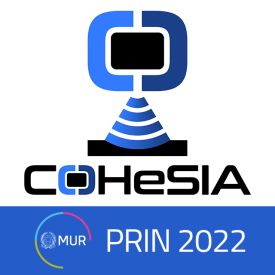
PARTiCIPANTS: Univesity of Trento, IMEM-CNR
The project aims to build and test a new tool for an in depth characterisation of metal forming processes and products. The innovative tool will be composed of a hardware and a software, for future use in manufacturing processes controls.
The hardware is based on an X-ray instrument where the main novelty is a new dual X-ray detection system with both angular and energy discrimination. The detector will be mounted on a goniometer with a non-monochromatised high energy X-ray source to acquire combined diffraction and fluorescence signals, originating at different depths inside the sampled material simultaneously. We call this kind of measured data an “angle-energy map”.
The analysis software will be integrated with a material elasto-visco-plastic self consistent package to achieve a full characterization from atomic to the macro scale.
The dedicated joint detection system will be constituted by an energy dispersive silicon-strip detector covering the range from 3 to 20 KeV with a CdZnTe one for the energies from 20 to 100 keV and up. In combination with a white X-ray source, it will probe and separate the signal coming from different depths inside the material under investigation. This will be fundamental to acquire information and model the in-depth inhomogeneities of texture, stresses and microstructure that are typical of deformation
processes like rolling, deep drawing or even machining.
The parameters based modeling incorporated directly in the data analysis aims to provide a better understanding of the deformation process under investigation and could also be used for monitoring the process at the industry level and be implemented for a feedback based control system.
The project results will constitute the base for:
- scaling up the detector to a larger acquisition solid-angle to speed-up the measurement and eliminate the goniometer requirement;
- properly automatising the acquisition and analysis process to industry usage;
- implementation of databases (local and cloud) for both the materials and process parts directly interfaced with the analysis software.
A consistent part of the project will be devoted to the development and testing of the detector, the acquisition and analysis of data acquired on real samples to refine the models applicability to metal deformation processes analysis.
Being able to link the local material microstructure and properties with the manufacturing parameters, will increase the process simulation accuracy and provide the validation for material driven process optimization and will allow product defects prediction and waste minimization models development. These deformation processes typically produce materials with anisotropic properties that if controlled can be exploited for the maximum benefits of the products. Being able to apply this approach directly on the manufacturing line, will allow the process online automatic control development.
This project is funded by European Union - NextGenerationEU through the national PRIN 2022 call









